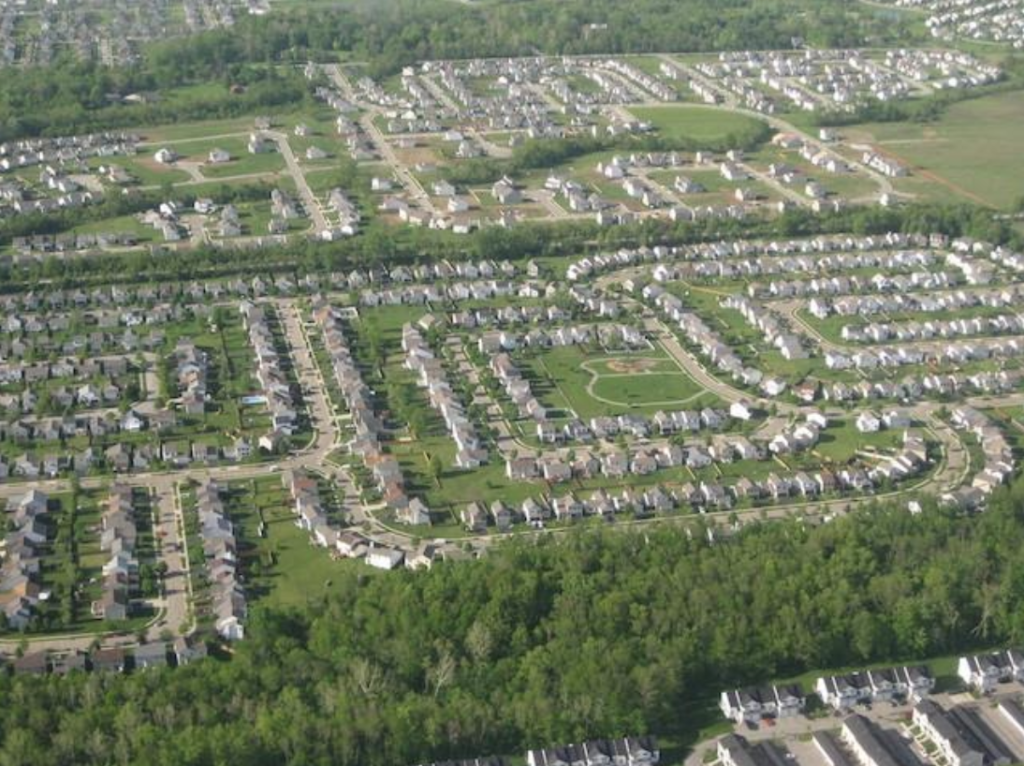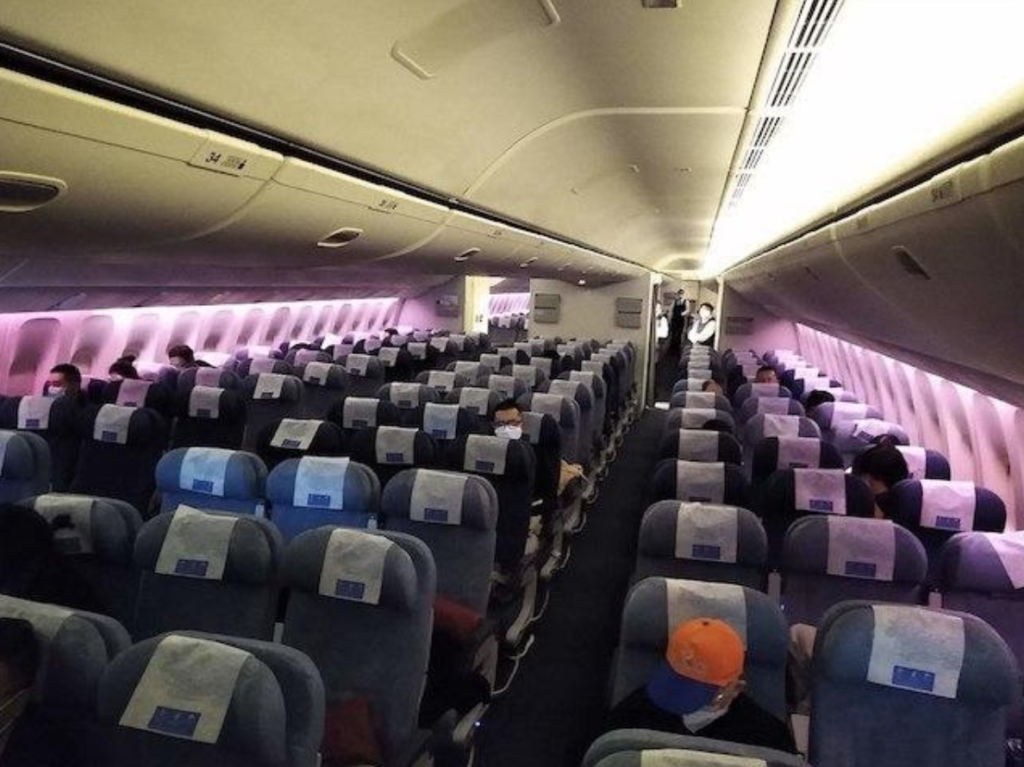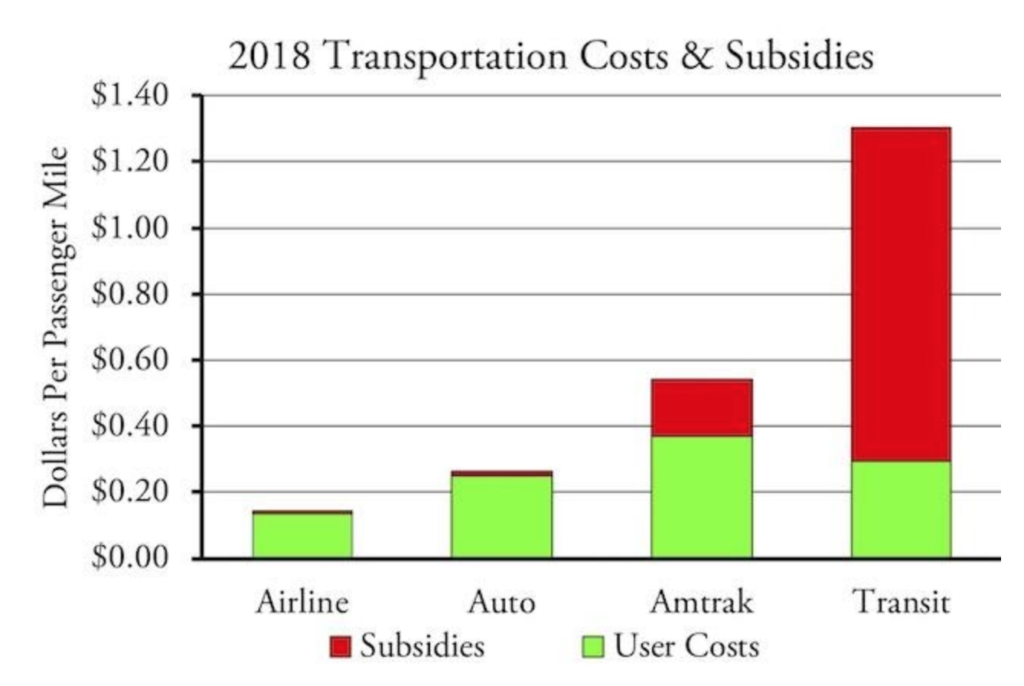Most people living through this pandemic have wondered, “What will change after COVID-19?” The transit industry in particular is worried about whether it will get back its lost riders, while airlines are just hoping to survive long enough to recover. While a lot of uncertainties remain, some things are less uncertain than others. This paper will focus on what is likely to happen in the first year or two after the various stay-at-home orders are lifted and the economy begins to recover.
1. More People Will Work at Home
The most profound change will be number of people working at home. The American Community Survey reported that more than 8.2 million people, or 5.3 percent of the nation’s workforce, worked exclusively at home in 2018. The share was much greater in some areas: 8.6 percent of Colorado workers and 15.4 percent of Marin County, California workers worked at home.
Yet this is only a small fraction of the number of people who could work at home. The Bureau of Labor Statistics estimates that 29 percent of American workers have jobs that would allow them to work at home. Another study estimates the number is as high as 34 percent. A little more than 30 percent of American workers have white-collar jobs, and what these studies are saying is that most white-collar workers could work at home while only some blue-collar workers could do so.
Global Workplace Analytics, an organization that focuses on “the future of work,” goes even beyond that, estimating that 56 percent of American workers could work at home at least part of the time. It predicts that, after the pandemic, 25 to 30 percent will work at home multiple days of the week.

Working at home can increase productivity and save both employers and employees money. Photo by Andrew Neel.
Working at home was already growing before the pandemic, increasing from under 6 million people in 2010 to well over 8 million in 2018. The pandemic has become a giant experiment at working at home: one survey found that 88 percent of employers big enough to have human resource departments are having some or all workers work at home.
The experiment appears to be successful. More than half of workers working at home during the pandemic report that their productivity has increased due to fewer distractions and time saved from commuting, while only a quarter feel their productivity has declined.
Employers have another reason to keep people working at home: Global Workplace Analytics estimates that they can save $11,000 a year for each person working at home half of the time, while the employees themselves would save another $2,500 to $4,000 a year. Obviously, they could save even more if employees work at home full time. Each percentage increase in the share of people working at home would save well over $10 billion dollars per year.
Twitter has already let many of its employees know that they will be allowed to work at home permanently after the pandemic is over. Based on all of this, it seems reasonable to expect that, on any given day after the pandemic, the share of people working at home will at least triple (not all of whom may be working exclusively at home — two people working at home half time equals one less daily commuter). This means that the share of people commuting to work is likely to decline by more than 10 percent.
2. More Will Move to Lower Densities
People have been moving into lower density areas since at least the end of WWII, and — aside from the interruption caused by the Depression and War — really for several decades before that. Demographer Wendell Cox shows this trend has continued through 2019. Despite claims that there is a pent-up demand to live in dense cities, a 2018 Gallup poll found that 40 percent of Americans who lived in cities aspired to live in lower-density areas while more Americans aspired to live in suburbs and rural areas than actually lived there.
The pandemic will accelerate this trend. A recent Harris poll found that 27 percent of Americans, including 39 percent of city residents, are considering moving to less-dense areas because of the coronavirus. Younger people who are supposedly most attracted to the cities are the ones most likely to want to move, and some already have.

Automobiles have liberated the many Americans who want to live in areas with large yards and access to open space. Photo by FutureAtlas.
Jobs will move to low-density areas too. Why should a business pay downtown rents when half of its employees are Zooming to work? As Joel Garreau noted in Edge City, businesses tend to locate their headquarters based on where their CEOs want to live, and higher-income people are already leading the charge out of the cities.
Cities aren’t going to lose 39 percent of their populations overnight. After 9/11, the Wall Street Journal reported that many banks were leaving Manhattan. Despite this, Wendell Cox estimates that the number of jobs in lower Manhattan grew by 10 percent between 2000 and 2015.
What is really going to accelerate the trend to decentralize is the increase in the number of people working at home. This is because most people’s commutes are limited by a time budget: they don’t want to spend all their time traveling. Average commutes today are about 25 minutes long so someone who commutes five days a week spends 250 minutes a week commuting. If they drop to commuting three days a week, they can spend 150 minutes commuting. If they drop to two commutes a week, they can spend 100 minutes on their commutes.
Lower densities may or may not insulate people from infectious diseases. But they do give people access to much more affordable housing. The increase in working at home after the pandemic is going to lead to a new burst of growth in suburban and exurban areas.
3. Oil Prices Will Stay Low
From 2011 through mid-2014, nationwide gas prices hovered around $3.50 a gallon for regular gasoline. Then they suddenly dropped and since then hovered around $2.50 a gallon. The pandemic brought them down to around $1.70 a gallon.
There is now a worldwide glut of oil on the market, a glut partly caused by a price war between Saudi Arabia and Russia. While economic recovery after the pandemic will consume much of the glut, it won’t stop the price war. Moreover, recovery won’t be instantaneous, so prices are likely to remain below their pre-pandemic average for at least a year, and perhaps longer. These lower prices will influence people’s travel and location decisions, encouraging more people to drive and move to lower-density areas.
4. Transit Will Lose 25-35% of Riders
Based on all the above considerations, transit in a post-pandemic world is likely to carry at least 25 percent fewer riders than it did before the pandemic. This will happen for several reasons.
First, the white-collar workers who are most likely to work at home are also most likely to have been transit commuters before the pandemic. In 2018, a higher percentage of people who earned $75,000 or more per year commuted by transit than any other income class. Based on this, increasing the share of people working at home from 5 to 15 percent will reduce the number of people commuting by transit by at least 10 percent. This is going to especially impact rail transit, which tends to serve mostly white-collar workers while bus transit serves mainly blue-collar workers.

Will people dare ride transit without masks? Photo by Eneas De Troya.
Second, taking 10 percent of commuters off the road will have a visible effect on congestion. As economist Anthony Downs realized, people respond to congestion by changing their travel times, routes, or modes of travel. When something happens to relieve congestion, some of those people change back, which he called a triple convergence. If just 5 percent of those who change their habits in response to reduced congestion are transit riders who decide to drive instead, transit will lose another 10 percent of its commuters. This will impact both rail and bus transit.
Third, transit works best bringing people from dense suburbs to denser downtowns. As jobs and people move to more remote areas, transit becomes increasingly ineffective. The acceleration of decentralization will probably reduce transit commuting by another 5 percent.
Fourth, low fuel prices will also encourage people to drive rather than ride transit. Finally, will all of the people who simply decide that, between infectious diseases, crime, and other problems, transit is not worth the hassle. Based on these considerations, a 25 percent decline in future transit commuting below pre-pandemic levels seems conservative; 35 percent is quite possible.
According to table 9a of the National Household Travel Survey, as of 2017 work-related trips made up 40 percent of transit ridership. But people who give up using transit for commuting are probably also going to give up using it for shopping, social, recreational, and other purposes. Thus, we can expect to see per capita transit ridership to be at least 25 to 35 percent lower after the recovery than it was before.
5. Driverless Cars Will Be Delayed
The various companies developing driverless cars are each following one of two pathways. First is the Tesla model, in which new cars are sold with driver assist features that are gradually improved through software (and possibly hardware) upgrades until they are fully driverless. Second is the Waymo model, in which cars are placed in ride-hailing service that can only operate in specific zones. Eventually, with the revenues earned from ride hailing, the zones would be expanded to include the entire country and at some point, such cars would be sold to the public.
Before the pandemic, I would have bet that the Waymo model would win the race to have fully driverless cars. COVID-19, however, has thrown a monkey wrench into this business plan. Taxi and ride-hailing drivers can sanitize their cars after each use. They can even do the sanitizing in front of squeamish customers to ensure that they are comfortable riding their cars. But a driverless car, by definition, has no one to do such sanitizing.
Waymo and other companies following this model, including Ford and General Motors, will have to anti-viral materials in auto interiors, UV lights, or other autonomous safeguards that will assure potential ride hailers that their vehicles will be free of infectious diseases. This is likely to delay the widespread introduction of driverless ride hailing.

Unless manufacturers can develop a system of autonomous sanitizing of auto interiors, dreams of driverless ride hailing may be one of the victims of the coronavirus. Photo by Dllu.
Ford, which previously promised to begin mass producing driverless cars in 2021, has already announced a delay until 2022 due to the coronavirus, and that still assumes the ride-hailing model. When driverless cars are finally available, they are going to speed up the decline of mass transportation, but the pandemic may have added several years to that time.
6. Air Travel Will Take a Hit but Survive
Keeping people six feet apart from one another requires giving each person on a plane close to 60 square feet of space, yet airlines have been profitable only by packing people into as little as 7 square feet of space per person. Several airlines have already gone bankrupt or shut down completely due to the effects of the pandemic.
However, unlike urban transit, for long-haul traffic the airlines do not face competition from a mode that is faster, more convenient, less expensive, and less likely to transmit infections. While the airlines may have to make some efforts to ensure customers that interiors are sanitized after each flight, the demand for long-distance air travel is not likely to decline enough to put the industry at risk.

Nearly empty planes allow passengers to socially distance themselves but aren’t economically sustainable for the industry. Photo by Mx. Granger.
Short-distance air travel is different. Most airlines offer short-distance flights as feeders into their long-distance flights. Some, however, cater to business travelers making short hops. Before the pandemic, for example, Alaska offered hourly flights between Seattle and Portland and many if not most of the people on those flights were just going between those two regions.
Such short-distance air travel faces the same competition as public transit, namely private automobiles. Some experts believe that driverless cars, when they become capable of intercity travel, would significantly reduce the short-haul airline market. Public response to the coronavirus might make that happen even before driverless cars are available. Thus, there will be fewer short-haul flights and the ones that are left will all be feeders into long-haul routes.
7. Amtrak Will Lose 10-20% of Riders
Amtrak could benefit from a decline in short-haul air travel. Amtrak trains offer more space per passenger than commercial airliners, and generally aren’t as full. But they still don’t offer six feet of social distancing, even when operating at their usual 50 percent of capacity, and Amtrak can’t guarantee that all interiors are sterilized at all times.
As a result, Amtrak is likely to lose more riders to automobiles than it will gain from the airlines. It probably won’t lose as many customers as urban transit because many of the people who ride Amtrak are part of a niche market that may be more loyal than transit riders.
Like the airlines, Amtrak’s losses will likely be greatest in its short-haul routes. Train trips in the Northeast Corridor, for example, average about 160 miles, while those on state-supported day trains average about 125 miles. The same people who would switch from short-haul airline flights to driving are likely to switch from Amtrak to driving.
8. COVID 19 May be With us for a Long Time
Many experts predict the COVID virus is part of our lives going forward. A paper from the Yale School of Medicine states “COVID 19 can stay with us forever” https://medicine.yale.edu/news-article/24941/ Dr. Anthony Fauci states: “[a COVID vaccine] might not last forever and its effect will be finite“. He goes on to say: “We might need a boost to continue the protection, but right now we do not know how long it lasts…….the durability of immunity that’s protective ranges from three to six months to almost always less than a year” https://var/web/site/public_html.deseret.com/u-s-world/2020/7/8/21316087/coronavirus-covid-19-vaccine-booster CNBC reports in an interview with a noted virologist and former head of the CDC: “Even With a Vaccine, COVID is here to stay…… it might be with us forever” https://var/web/site/public_html.cnbc.com/2020/07/28/even-with-vaccine-we-will-be-dealing-with-this-forever-virus-experts.html
The bottom line is, we don’t know the future of COVID 19, a reality that makes investing huge sums into public transit a reckless endeavor. Perhaps even more disturbing, due to climate change and other factors, pandemics are increasing in frequency; what will the NEXT pandemic bring?
Solve Today’s Problems Today
Human beings are adaptable and we will modify our behavior to address a COVID 19 world. Social distancing, wearing of masks and a sensitivity to communicable diseases is now part of the human condition.
Some changes will be irreversible. The biggest one will be more people working at home. The second, which partly follows from the first, will be more people and jobs moving from dense cities to lower-density suburbs or exurbs. These changes, in turn, will significantly reduce transit ridership and contribute to declines in short-distance travel by plane and train.
The future is always uncertain, but these projections reaffirm the prescription I have always given to transportation planners: solve today’s problems today so that the future will be best able to solve whatever problems it faces. This means not committing resources to megaprojects, whether highways or mass transportation, that may not be needed on the future.
New roads will be needed in regions that are growing and expanding. Unless they involve road pricing, which is politically controversial, attempts to relieve congestion by building new capacity in existing urbanized areas may be extraordinarily expensive. In these areas, transportation agencies should focus on microprojects, such as traffic signal coordination and fixing traffic bottlenecks, that can produce rapid and positive results.
Legislators and appropriators should take this opportunity to rethink subsidies for transportation. Transit agencies and Amtrak would like people to believe that everyone deserves to have access to their forms of transport even if they rarely or never use it. When ridership goes up, they demand more subsidies to carry the loads. When ridership goes down, they demand more subsidies to make up for the lost fare revenues.
The reality is that people move to low-density areas knowing that by doing so they give up access to some services that are only available in high-density areas. As more people respond to the pandemic by moving to lower densities, taxpayers should not be required to pay to provide those services.

Despite transport subsidies that are heavily biased towards Amtrak and transit, these forms of travel make a trivial contribution to the nation’s transportation system: Amtrak carries about 1 percent as many passenger miles as the airlines; transit about 1 percent as many as autos. This chart is an update of the 2017 chart in policy brief 20; see that policy brief for how these numbers were calculated.
Transportation subsidies have grown unchecked for too many years. In 2018, subsidies to Amtrak were about twenty times greater, per passenger mile, than subsidies to air travel, while subsidies to transit were about 80 times greater, per passenger mile, than highway subsidies. To a large degree, both Amtrak and urban transit are obsolete forms of travel that are slower and more expensive than the alternatives, which is why users are not willing to pay their full costs.
The best thing Congress and the states can do is to end subsidies to all forms of transportation and allow private companies and public agencies to provide a level of services that can be funded out of user fees. This will lead to a transportation system that is efficient, resilient, and that meets that needs of all Americans.
